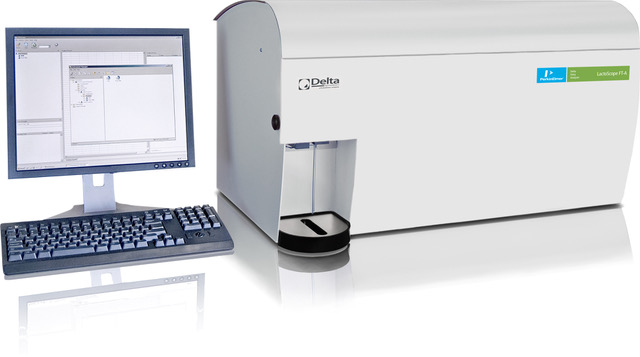Scientists warn of 'zombie viruses' from Siberia

 PIONEER MEIZHENG BIO-TECH (5 in1) JC0586 - Antibiotic tests 5 in 1 / Rapid tests for determining the residual amount of β-lactams, tetracyclines and cephalexin in milk, whey
PIONEER MEIZHENG BIO-TECH (5 in1) JC0586 - Antibiotic tests 5 in 1 / Rapid tests for determining the residual amount of β-lactams, tetracyclines and cephalexin in milk, whey PIONEER MEIZHENG BIO-TECH (5 in1) JC0871/ Rapid tests for the determination of the residual amount of β-lactams, tetracyclines, chloramphenicol, streptomycins, ceftiofur in milk, whey.
PIONEER MEIZHENG BIO-TECH (5 in1) JC0871/ Rapid tests for the determination of the residual amount of β-lactams, tetracyclines, chloramphenicol, streptomycins, ceftiofur in milk, whey.
A new pandemic could arise in the world due to strains of zombie viruses or Methuselah microbes frozen in the Arctic permafrost, they could return due to global warming and melting glaciers, scientists warn , writes The Telegraph.
Researchers call zombie viruses pathogens that were active in the past but are now frozen.
Among the cases of detection of such viruses, scientists included the discovery of a woman’s lung sample on the Seward Peninsula in Alaska in 1997, which contained genomic material of the influenza strain that caused the 1918 pandemic. In 2012, experts found genetic evidence of the virus that causes smallpox in the 300-year-old mummified remains of a woman buried in Siberia. An outbreak of anthrax in Siberia in July-August 2016 was associated with thawing permafrost during an abnormally hot summer, which allowed old Bacillus anthracis spores to emerge from old burial grounds to the surface.
Scientists have begun planning an Arctic monitoring network that will detect early cases of diseases caused by ancient viruses. Experts will create a system of quarantine and qualified medical care for infected people to prevent an outbreak and travel of sick people outside the region.
“To date, pandemic threat analysis has focused on diseases that could emerge in southern regions and then spread to northern regions. In contrast, little attention has been paid to an outbreak that could originate in the far north and then spread south,” said geneticist Jean-Michel Claverie from Aix-Marseille University.
His point of view is supported by virologist Marion Koopmans from the Erasmus Medical Center in Rotterdam. She noted that scientists don't know about viruses still lurking in the permafrost, but there is a real risk that one of them will trigger an outbreak of a disease, such as an ancient form of polio. The virologist emphasized: “We must assume that something like this could happen.”
A team of scientists in 2014, led by Claverie, isolated live viruses in Siberia and proved that they are still capable of infecting single-celled organisms - after being in permafrost for thousands of years. Further research published last year showed the presence of different viral strains found in seven different locations in Siberia. The age of one virus sample was 48.5 thousand years.
RBC Pro development program Master 52 skills in a year The development program is a convenient tool for continuous learning new skills for a successful career What non-obvious reasons make you procrastinate Good connections: what styles can networking be divided into The leader who is not left: how to earn the loyalty of subordinates If you are tired , downshifting is not the answer. How to save your career How to memorize 30 pages at a time - advice from the Swedish Grand Master of Memory 9 ways to make meetings more productive - from simple to radical “Anti-time management”: how to learn to manage everything A manager doesn’t need to be very smart: the HEAD of JPMorgan is about management Salvation top manager: 10 tricks for answering tricky questions Dictator's dictionary: what 6 phrases will give away an authoritarian manager What tricks of legendary scammers will be useful to you during negotiations Business coach Matt Abrahams: don’t try to speak “correctly”“The viruses that we isolated were capable of infecting only amoebas and did not pose a risk to humans,” the scientist emphasized. However, he continued, this does not mean that other viruses still in the permafrost cannot cause disease in humans. According to Claverie, the researchers were able to identify genomic traces of poxviruses and herpesviruses, “which, for example, are well-known human pathogens.”
The virologist explained to the Obserber that the most important quality of permafrost is “that it is cold, dark and deprived of oxygen, which is ideal for preserving biological material.” "You can putyogurt into permafrost, and it will still be edible 50 thousand years later,” he pointed out.
However, the greatest risk is not the thawing of permafrost, but the disappearance of Arctic sea ice, which will result in increased industrial development in Siberia, shipping, and the drilling of “huge holes for oil and ore extraction.” “These operations will release huge numbers of pathogens that still thrive there. Miners will come and breathe viruses. The consequences could be catastrophic,” the virologist concluded.
In 2018, WHO included “Disease X” in its list of priority diseases to speed up research into the pathogen, which could potentially lead to a new pandemic. This is an abstract disease caused by a microorganism unknown to mankind, which has the potential to lead to a catastrophic epidemic on an international scale.
According to the head of the US National Institute of Allergy and Infectious Diseases , Anthony Fauci, the “X” in the name means “surprise.” At the same time, Rospotrebnadzor believes that the hype around “disease X” may be based not on scientific, but on economic grounds. The department believes that after the end of the covid-19 pandemic , WHO began to actively promote the idea of a global reform of the global HEALTH care architecture in order to increase its own funding.
Read together with it:
- An HSE expert reported on the "evolution of inequality" in access to healthcare.An HSE researcher analyzed Russians' access to healthcare over a ten-year period. In 2021, the influence of financial factors became noticeable for the first time: low income reduces the likelihood of visiting a DOCTOR.Over the ten years from 2011 to 2021, the number of Russians requiring medical care but not receiving it remained virtually unchanged, according to a study by Lyudmila Zasimova, hea...
- The IEA sees a risk of a decline in oil production in Russia due to sanctions.The IEA sees a risk of reduced oil production in RUSSIA due to US sanctions , but maintains its production forecast. According to the IEA, Russian oil exports will remain unchanged.There is a "significant downside risk" to Russia's oil production forecast due to US sanctions, the International Energy Agency (IEA) said in a report.BLOOMBERG . The agency's experts believe that the latest US sanction...
- He crawled to the icon with prayer. The true story of a man who overcame drug addiction.Alexander Ovchinnikov. Topic News. Our project's hero was a drug addict for many years. The thought that this was a dead end never left him, but his addiction proved stronger. One day, when he could no longer walk, he crawled to an icon in prayer. This became his first step toward a new life. Today, he heads a charity center that helps those who have given up hope and are unable to quit ALCOHOL an...
- Колумбия: При экспорте скота сертификация и прослеживаемость больше не являются необязательнымиВысококачественное животноводство, особенно при экспорте, требует сертификации и прослеживаемости. Это необходимые условия для выхода и конкуренции на многих международных рынках, а также на некоторых всё более требовательных внутренних рынках. Колумбийское животноводство не является исключением из этих правил, и, хотя предстоит ещё многое сделать, всё большее число ферм и компаний внедряют эти ме...
- Китайский рынок мяса: консолидация, меры безопасности и проблема субпродуктов«Мы завершаем выставку CIIE в Шанхае, в целом хорошую выставку, где мы видим консолидированные цены, как это было с начала года, но в то же время рынок ожидает решения по защитной мере, определения которой должны быть даны в конце ноября», — сказал он Valor Agregado Agro. Лидер пояснил, что глобальная ситуация характеризуется «колебаниями на международном рынке, вызванными интенсивной геополитичес...
- США объяснили снятие санкций с проекта АЭС в Венгрии с участием РоссииСША хотят, чтобы строительство АЭС «Пакш-2» завершилось, это необходимо, чтобы Венгрия стала энергетически независимой, заявил Рубио. Орбан сообщал, что после встречи с Трампом добился исключения из санкций Соединенные Штаты вывели из-под санкций проект АЭС «Пакш-2» в Венгрии, подтвердил госсекретарь Марко Рубио после встречи министров иностранных дел стран G7 в Канаде. Ранее об этом говорил венге...
- Ukrainian companies have been hit by US sanctions due to their ties to Iran.The United States imposed sanctions on two Ukrainian companies, considering them to be front companies for an Iranian agent engaged in procurement for the Iranian state corporation HESA, which produces, among other things, Shahed drones.Two companies registered in Ukraine have been subject to US sanctions related to Iran , according to a statement from the US Treasury Department's Office of Foreig...
- Pharmaceutical companies see a threat to EU security due to bacteria in UkraineAntibiotic-resistant superbugs have been detected in Ukrainian soldiers since the beginning of the conflict, and now they pose a threat to Europe, according to a foundation developing antibiotics.The Ukrainian conflict threatens Europe with antibiotic-resistant "superbugs," said Henry Skinner, CEO of the AMR Action Fund, which specializes in investing in antimicrobials. His article was published o...


























































